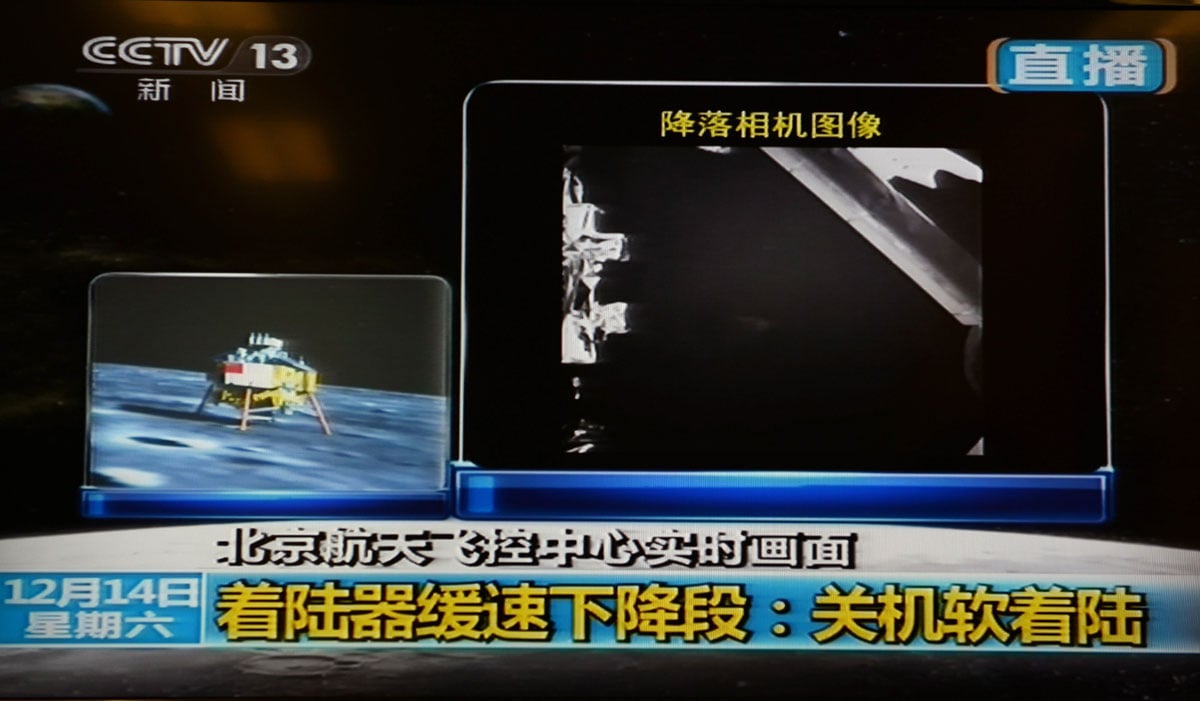
Scientists burst into applause as a computer generated image representing the spacecraft was seen landing on the moon's surface via screens at a Beijing control centre, state broadcaster China Central Television (CCTV) showed, 12 days after Chang'e-3 blasted off on a Long March-3B carrier rocket.
China is set to become just the third country to carry out a moon rover mission, following the United States and former Soviet Union, which also made the last soft landing on the moon 37 years ago.
The probe touched down on an ancient 400-kilometre (250-mile) wide plain known in Latin as Sinus Iridum, or The Bay of Rainbows.
The landing was previously described as the "most difficult" part of the mission by the Chinese Academy of Sciences in a post on Chang'e-3's microblogging page on Sina Weibo, a Chinese Twitter equivalent.
The probe used sensors and 3D imaging to identify a flat surface. Thrusters were then deployed 100 metres (330 feet) from the lunar surface to gently guide the craft into position.
The landing marks the latest step in an ambitious space programme which is seen as a symbol of China's rising global stature and technological advancement, as well as the Communist Party's success in reversing the fortunes of the once impoverished nation.
It comes a decade after the country first sent an astronaut into space, and ahead of plans to establish a permanent space station by 2020 and eventually send a human to the moon.
COMMENTS (9)
Comments are moderated and generally will be posted if they are on-topic and not abusive.
For more information, please see our Comments FAQ

















@Khurram Awan: and we are fools.
@Lahori(US): but tis time its Rover, and still India has to launch a Rover which is Chandrayaan 2.
@Mohd tarekh: Pakistan do have a technology to develop Space Launch Vehicle ( SLV ) within 2 years as Pakistan already have long range Ballistic missile tech, Solid fuel, liquid fuel and Cryogenic technology as well. Also our long range missiles are already multiple stage like SLVs. The only thing missing is the lack of political will to allocate even a single billion rupees to this project. At present the budget of SUPARCO is less than a Billion annually and that is peanuts. Zardari government ended the SLV project for Pakistan and PMLN is a party of Dumbs to think anything remarkable. So the hopes for now are dashed to have our own SLV , GSLV and eventually lunar landing in the future. Our Rehbar Rocket project was one of the most Advanced Rocket Projects in 1960s and 70s but afterwards we lost and right now we have no direction at all. Just have a small history lesson for us.
http://en.wikipedia.org/wiki/Rehbar-I
Good job China, healthy competition makes nations progressive :)
@Sultan Ahmed: Unfortunately you're wrong. Between 1966 and 1968 NASA's Surveyor program sent seven robotic spacecraft (rovers) to the moon to prepare for the Apollo program. Five of the Surveyor craft successfully soft-landed on the moon. http://en.wikipedia.org/wiki/Surveyor_program
While India has already reached the moon(2008) and now is on its way to mars, these Chinese are still hopping around moon!! Common china.